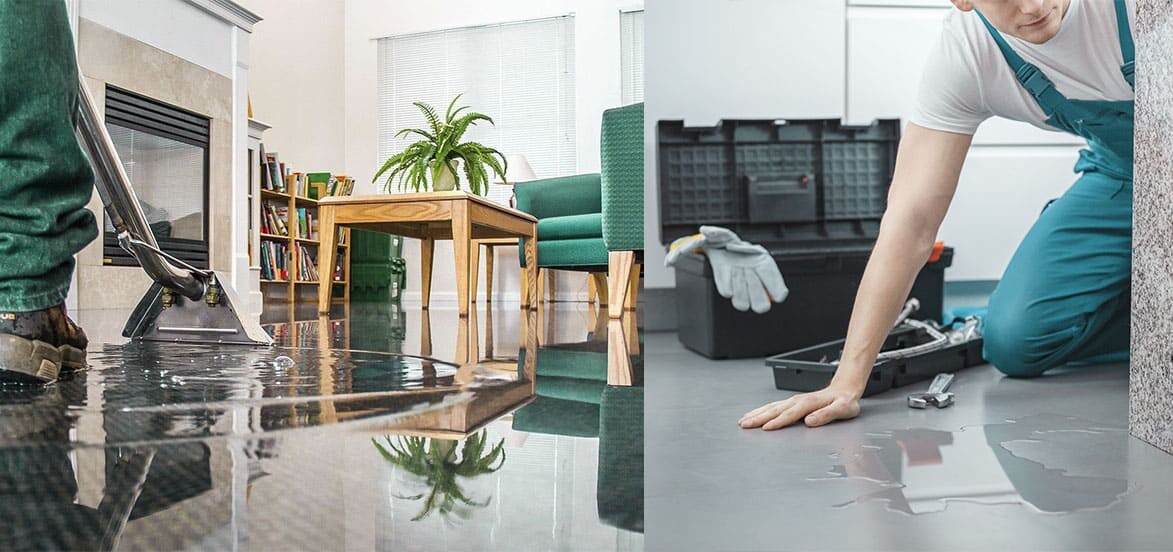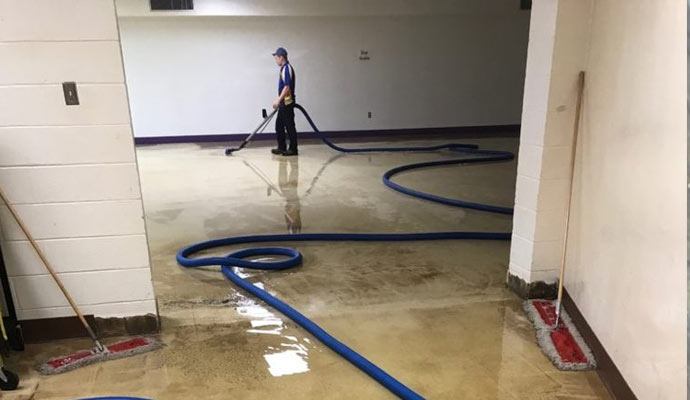Expert-recommended tips for effective Water Damage Restoration
Top Tips for Effective Water Damage Restoration: Protect Your Property Today
Water damage can strike unexpectedly, causing substantial disturbance and potential dangers. Effective restoration calls for a methodical strategy to reduce further injury. From assessing the damage to executing safety nets, each step plays an important role in safeguarding home. Understanding these strategies can make all the distinction in the after-effects of a water-related dilemma. What important actions should be focused on to assure thorough defense?
Assess the Damage Immediately

Shut down the Water Supply
Turning off the water system is an important step in stopping more damage throughout a water-related occurrence. When a leakage or flooding occurs, immediate action is important to reduce the extent of the damage. Finding the primary water shut-off valve need to be a concern. This valve is often positioned near the water meter or where the water line enters the residential or commercial property. Once situated, turning the shutoff clockwise will stop the flow of water. In instances where the main valve is hard to reach, specific shut-off valves for devices may also be made use of. Immediately shutting off the water system not just safeguards the building from additional injury but also assists in the subsequent restoration procedure, guaranteeing that recovery efforts can start without hold-up.
Eliminate Excess Water Without Delay
Removing excess water immediately is crucial for minimizing damage and protecting against mold and mildew growth in impacted areas. The longer water stays in contact with materials such as timber, drywall, and insulation, the higher the threat of structural damage and the development of mold and mildew. Home owners need to act rapidly to examine the scenario and make use of suitable devices, such as wet vacuums or pumps, to extract standing water effectively. If the quantity of water is considerable, calling professional restoration services might be needed, as they can give specialized tools and knowledge. Furthermore, removing furniture and valuables from the afflicted location can assist to reduce damage and facilitate the general restoration procedure. Timely activity not only secures property but likewise help in a smoother healing trip.
Dry Out the Affected Area
After eliminating excess water, it is important to dry out the damaged area extensively. This entails eliminating any standing water and boosting air circulation to promote evaporation. Reliable drying will certainly aid avoid mold and mildew growth and further damage.
Get Rid Of Standing Water
Quickly attending to standing water is crucial for efficient water damage restoration. The presence of stationary water can bring about more home damage and produce an atmosphere favorable to mold and mildew growth. To minimize these risks, it is important to get rid of standing water as quickly as feasible (Water Damage Restoration). This procedure commonly involves using completely submersible pumps, wet vacuum cleaners, or specialized removal equipment. Professionals advise assessing the deepness and degree of the water prior to picking the suitable method for removal. Safety and security safety measures must also be taken, including using safety gear and guaranteeing electricity is shut off in impacted areas. When the standing water is efficiently removed, the drying process can start, even more protecting the building from continuous damage
Increase Air Circulation

Inspect for Mold Growth
Mold and mildew growth is a significant concern following water damage, as it can result in wellness problems and architectural deterioration. After any flooding or leakages, it is necessary to perform a detailed examination of the affected view website areas. This consists of checking hidden rooms such as behind walls, under rugs, and in cellars or attics where dampness may stick around. Indications of mold include a mildewy smell, discoloration on surfaces, or visible growth. Residential property proprietors need to make use of safety equipment when examining, as mold spores can pose health and wellness threats. Water Damage Restoration. If mold is found, it is essential to resolve it immediately, as delaying remediation can aggravate the issue and increase the threat of severe health concerns for owners. Early treatment is crucial to efficient mold management
Repair Service and Restore Damaged Structures
When dealing with water damage, it is vital to very first assess the architectural integrity of the impacted areas (Water Damage Restoration). This examination aids recognize prospective threats and informs the necessary fixing methods. Engaging professional restoration solutions guarantees that the restoration procedure is performed securely and successfully
Evaluate Structural Stability First
Before initiating any water damage restoration, it is vital to analyze the architectural honesty of the afflicted area. This assessment aids determine any kind of endangered elements, such as structures, beams, or walls, which might pose safety and security dangers. Examining for indicators of bending, splitting, or mold development is critical, as these indicators can reveal underlying damage that needs immediate interest. Additionally, understanding the degree of the damage can guide restoration efforts and determine whether repair work are viable or if replacement is needed. It is essential to document findings completely, as this details can be valuable for insurance coverage cases or future reference. Focusing on structural evaluation assurances that restoration efforts continue safely and effectively, ultimately securing the residential property and its passengers.

Use Professional Restoration Services
Utilizing specialist restoration services is vital for effectively repairing and recovering damaged structures after water events. These professionals have the needed training, devices, and experience to examine and minimize water damage completely. They can identify covert problems, such as mold and mildew growth and structural weak points, that might not be promptly evident. Expert solutions also employ sophisticated drying techniques and equipment, making sure that all wetness is gotten rid of to stop further damage. Additionally, they follow market standards and guidelines, making sure that the restoration procedure is safe and reliable. By engaging restoration experts, home proprietors can expedite recovery, lessen long-lasting damage, and ultimately safeguard their investment - Flood Cleanup Services. This proactive method is important in preserving the honesty and safety of afflicted frameworks
Avoid Future Water Damage
To effectively avoid future water damage, house owners should take on a positive method to repair and maintenance. Routine inspection of downspouts, roofings, and gutters is important; stopped up seamless gutters can cause water overflow and roof leaks. Additionally, inspecting for leaks in pipes components and devices can ward off possible damage. Homeowners must likewise think about setting up sump pumps in basements or low-lying areas to manage water buildup. Securing splits in structures and guaranteeing proper drainage around the residential property are vital action in safeguarding against water intrusion. Moreover, preserving humidity degrees with dehumidifiers can protect against mold and mildew development. By applying these safety nets, home owners can significantly decrease the risk of water damage and protect their home for the long-term.
When a water damage event takes place, it is vital to evaluate the damage immediately to alleviate additional issues. Removing excess water promptly is vital for minimizing damage and protecting against mold and mildew development in impacted locations. Quickly dealing with standing water is critical for reliable water damage restoration. The visibility of stationary water can lead to further residential property damage and create a setting helpful to mold and mildew development. Prior to launching any water damage restoration, it is important to examine the architectural integrity of the damaged area.